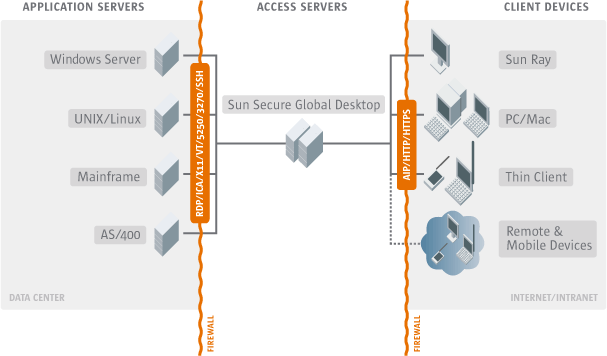![]() Secure Global Desktop 4.40 Administration Guide
> Getting Started
> Introducing the Three-Tier Architecture
Secure Global Desktop 4.40 Administration Guide
> Getting Started
> Introducing the Three-Tier Architecture
| Read This Topic to... |
|---|
|
SGD is built around a three-tier architecture model as shown in the following diagram.

Different tiers can reside on the same host, for example, a single UNIX platform host can act as both an SGD server and an application server, but the tiers remain logically independent.
A client device is a piece of hardware that can communicate with SGD using a web browser and the Sun Secure Global Desktop Client (SGD Client).
The web browser communicates with the SGD Web Server on the second tier and displays the webtop to users.
The SGD Client communicates with SGD servers on the second tier and displays the applications that users run.
The Adaptive Internet Protocol (AIP) ensures optimal network usage between the first and second tiers.
The second tier might contain a single SGD server, or many SGD servers configured to form an array.
An SGD server is responsible for the following:
An application server runs users' applications.
When a user clicks a link on their webtop, SGD starts the application on an appropriate application server. Output from the application is redirected by the SGD server from the application server to the client device.
When you tell SGD about an application, you include information about all the application servers that can run the application. SGD load balances between the application servers.
The following is a summary of the SGD three-tier architecture:
Copyright © 1997-2007 Sun Microsystems, Inc. All rights reserved.